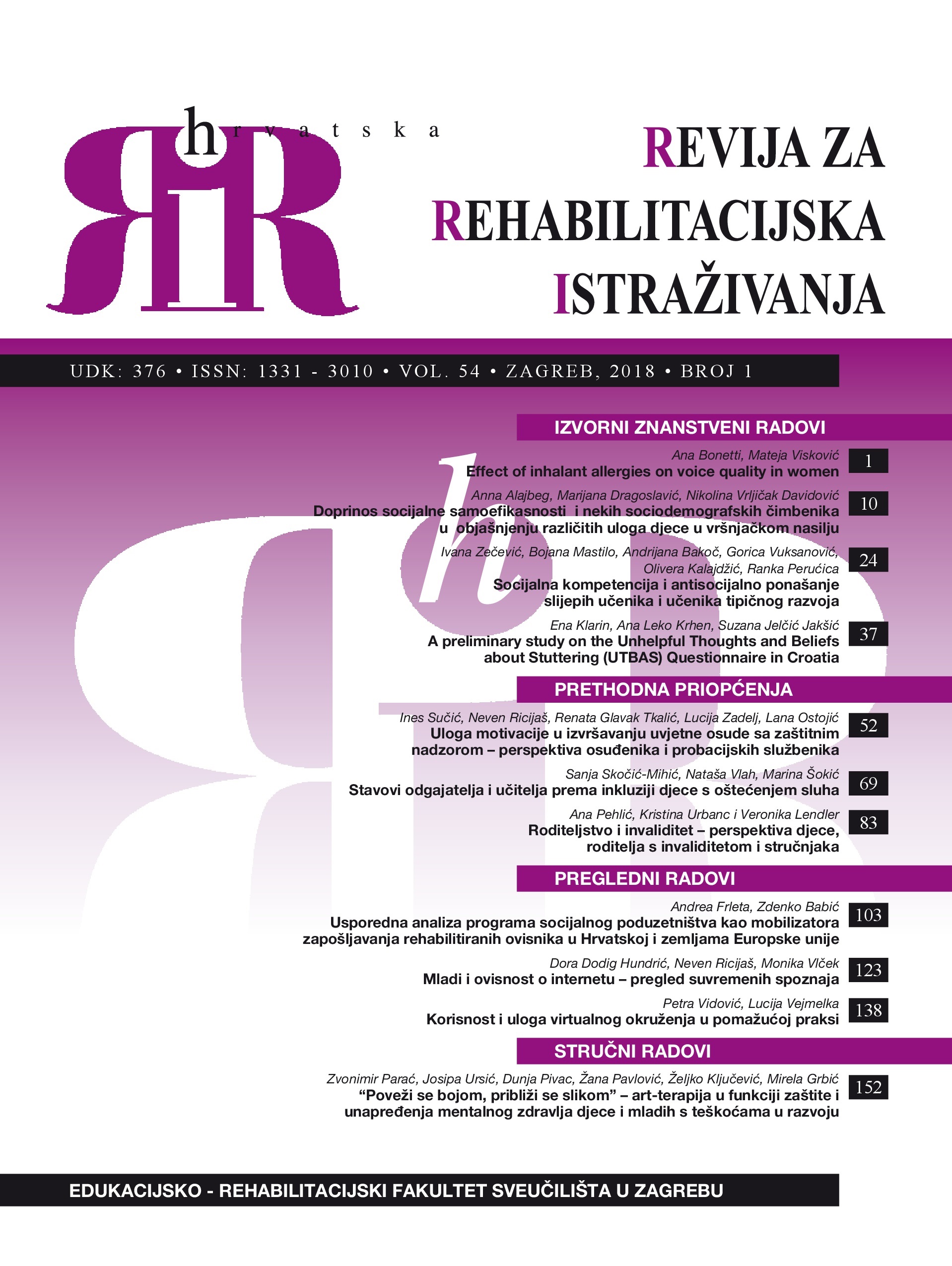Doprinos socijalne samoefikasnosti i nekih sociodemografskih čimbenika u objašnjenju različitih uloga djece u vršnjačkom nasilju
Contribution of social self-efficacy and some sociodemographic factors to the different roles of children in peer violence
Author(s): Anna Alajbeg, Marijana Dragoslavić, Nikolina Vrljičak DavidovićSubject(s): Behaviorism, Evaluation research, Studies in violence and power, Demography and human biology
Published by: Sveučilište u Zagrebu, Edukacijsko-rehabilitacijski fakultet
Keywords: vršnjačko nasilje; uloge djece; socijalna samoefikasnost;
Summary/Abstract: The aim of this research was to examine the role of social self-efficacy and some sociodemographic factors in influencing how children engage in peer violence. A total of 715 students (54% girls and 46% boys) in the seventh grade (N = 370) and eighth grade (N = 345) from five regions in Croatia participated in this study. The average age was 13.22 years (SD = 0.664). For the purposes of this paper, the following measurement instruments were used: the General Data Questionnaire, the adapted Participant Role Questionnaire (PRQ) and Social Self-Efficacy scale. Chi-squared testing and logistic regression showed that boys were more often bullies and active and passive assistants, while girls were more often defenders. Both girls and boys were equally victims and bystanders of peer violence. Seventh-grade students were more often bullies and active assistants. Children who acted as defenders had higher social self-efficacy, while bystanders had lower social self-efficacy. The results of this research may have important implications in creating programmes to reduce and prevent peer violence, bullying and cyberbullying.
Journal: Hrvatska revija za rehabilitacijska istraživanja
- Issue Year: 54/2018
- Issue No: 1
- Page Range: 10-23
- Page Count: 14
- Language: Croatian

